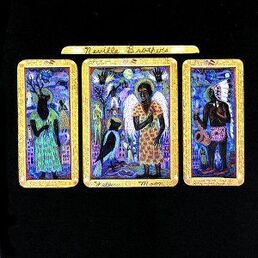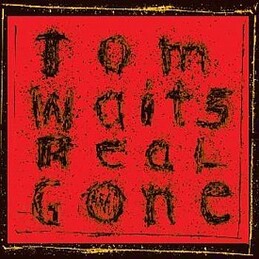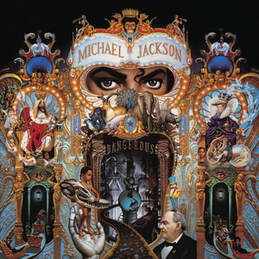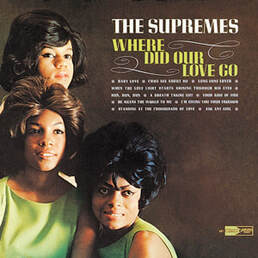
The Brill Building songwriting team of Jeff Barry and Ellie Greenwich brought the singing Dixie Cups, a New Orleans girl group, into the studio to touch up a song they were working on with songwriting producer Mike Stoller.
The principals gathered in the booth when by chance the engineer opened the mics to the studio. Just for fun, the Dixie Cups were singing an old Mardi Gras song called “Iko Iko.” It knocked everybody out.
The decision was made to record it, but there was no band on hand. No problem.Jeff and Ellie picked up a Coke bottle, a plastic bowl, and a few can openers.
That became the percussion.
Mike commandeered a West Indies kalimba—similar to an African thumb piano—someone had left behind, and backed by the Brill Building makeshift band, the Dixie Cups sang as if down in old New Orleans.
Stoller and partner Jerry Lieber released “Iko Iko” on their Red Bird label in March of 1965, peaking at number 20 on both the R&B and Billboard Hot 100 charts.
And that’s just the tip of the proverbial iceberg. Here are a few more.

At the Neville Brothers session for Yellow Moon (1989), producer Noah Howard used whatever was available in the studio for percussion.
For the “Yellow Moon” and “Voodoo” songs, they used little green glass Perrier bottles, found the best eight bars on the tape, and then looped it. The band played on top of the loop while the brothers sang live.
During a visit to Aaron Neville’s house, producer Howard noticed aluminum wind chimes hanging on his porch and got his permission to bring them back to the studio.
He used them on “With God on Our Side,” recording them at double speed. When they were played back at normal speed, they sounded like low-chiming church bells.[1]

Some 15 years later, Mark Howard hooked up with singer-songwriter Tom Waits to record his new album Real Gone at an old, unused schoolhouse. Mark arranged Waits, a guitarist, and a bass player in a classroom and set a SONY Blaster recorder along with drummer Bryan Mantia (aka “Brain”) in the boy’s bathroom—the liveliest-sounding room.
On the day they recorded “Shake It,” Brain was in the bathroom taping up his snare drum with gaffer tape—like duct tape but with fabric instead of plastic—while Mark, Tom, and the other musicians were in the classroom. Tom wanted the sound of the ripping tape on the record.
As Mark wrote:
|
So, I went into the bathroom to see Brain, and I told him that he was going to play gaffer tape on the song.
“How will I do that?” he asked incredulously. “Just by ripping it.” Brain used a whole roll of gaffer tape on the song. Once Brain had put down the gaffer tape, he went into the stall to take a piss, but the mic was still on. When he finished, we heard the stall door slamming. “What was that?” Tom asked. This time I told him it was the stall door slamming. “I want him to play the door,” Tom strangely suggested. I went back into the bathroom and told Brain that now he had to play the stall door. I told him to also hit the wall with a two-by-four piece of wood. “So, slam the door, then hit the wall with the wood as the rhythm.” At the end of the song, the stall door broke off and fell to the floor from being slammed. It was perfect timing.[2] |
A tape-ripping, door-slamming rhythm section! As far as anyone knows, Real Gone did not set a new percussive trend, but the album rated four out of five stars by Rolling Stone magazine and topped the Billboard Independent Album chart.
And there’s more than one way to use musical tape, as producer/musician Jim Dickinson did on the 1986 Paris Texas film soundtrack recording:
|
“I was playing an electric Kawai keyboard. I used reels of duct tape, rolling them across the keys. I rolled one of them down the black keys and the other one up the white keys, and the random harmonics were really nice—it’s the sound in Paris, Texas that’s like bicycle spokes.”[3]
|

While we’re on the subject, best to mention our most obsessive pursuer of ear pleasure, the King of Pop, Michael Jackson, who constantly urged his aides to record different sounds that could be used as percussion: sweeping floors, breaking glass, and hitting trash cans.
On “Don’t Stop ‘Til You Get Enough” (1979), his first single as a solo artist, he featured glass soda bottles (presumably struck by spoons), along with shakers in the rhythm mix.
On “Smooth” from his BAD album (1982), he recorded firework poppers—the ones you throw on the ground—inserting the poppety-pop-pop at the end of each hook in the song.
“She Dives Me Wild” from Dangerous (1991) featured a foundation of everyday sounds: honking horns, screeching brakes, and slamming doors.
On “Jam” from the same album, more subtle sounds—scanners and sleigh bells—persist throughout the number.
And on the “Will You Be There” track from Dangerous, the King of Pop wanted the rhythm to be dry and “in your face”—meaning, no reverb, just raw. They achieved the desired effect by banging a piece of wood against a piano bench. It created an organic wood-to-wood texture.[4]

Not be topped by King Pop, Lamont Dozier of the Motown songwriting-producing team Holland Dozier Holland (HDH) used car chains from somebody’s trunk as a percussive instrument on Martha and the Vandellas “Nowhere to Run.” In his memoir, Dozier added:
“Those distinctive sounds you hear on some of those [Motown] hit records were made by slamming a tire iron on a concrete floor or stomping on a piece of wood.”
He also revealed that what everyone thought were handclaps on the Supremes first number one hit “Where Did Our Love Go” was actually a teenager stomping on a piece of plywood.[5]
- Mark Howard with Chris Howard, Listen UP!: Recording Music With Bob Dylan, Neil Young, U2, R.E.M, The Tragically Hip, Red Hot Chili Peppers, Tom Waits . . . (Toronto, Canada: ECW Press, 2019), 9–10.
- Ibid., 159–60.
- Robert Gordon, Memphis Rent Party: The Blues, Rock & Soul in Music’s Hometown (New York: Bloomsbury Publishing, 2018), 23.
- Joseph Vogel, Man in The Music: The Creative Life and Work of Michael Jackson (New York: Vintage, 2019), 60–61; 155; 197; 223–34; 240; 246; 260.
- Lamont Dozier with Scott B. Bomar, How Sweet It Is: A Songwriter’s Reflections on Music, Motown, and the Mystery of the Muse (BMG, 2019), 103; 125.




 RSS Feed
RSS Feed